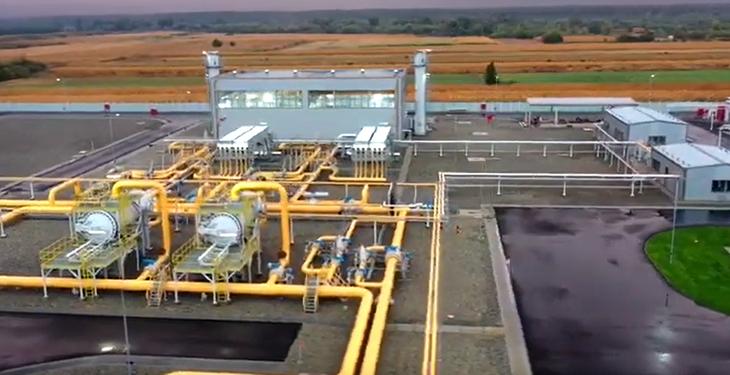Transgaz inaugurated the natural gas compression station (STC) in Podișor (Giurgiu county), an over 22 million euros worth investment. STC Podișor, together with STC Jupa and STC Bibești, is part of the BRUA Project – Phase 1, a project on the list of EU projects of common interest – a total investment of 500 million euros for the development of natural gas transport infrastructure in Romania and Europe.
STC Podișor includes two gas compression units (one in operation and one in reserve) manufactured by the American company Solar Turbine, with a power of 4.6 MW each (under ISO conditions).
The main operating parameters of the station
- Suction pressure 20-40 bar g
- Discharge pressure 30-60 bar g
- Maximum gas flow: 565,000 Sm3 / h, with two compression units
Podișor Compression Station is a technological installation interconnected to the following gas pipelines: DN 32” STC Podișor – STC Bibești, DN 20” STC Podișor – Giurgiu. STC Podișor will be connected to the future pipeline DN 40” Tuzla-Podișor. The station is bidirectional, so it can compress gas both from Giurgiu or Tuzla direction to Bibești direction, as well as from Bibești or Tuzla direction to Giurgiu direction. Since April 2018, between 100 and 235 workers have been working for the execution of the 22 million euros worth contract, of which the value of the two compressed units installed is 12.6 million euros, excluding VAT.
A month ago, the national system operator inaugurated the STC from Jupa (Caraș Severin county), an investment of 12.6 million euros started in April 2018. The station is interconnected to the following gas pipelines: DN 32″ SCG Bibești – SCG Jupa, DN 32″ SCG Jupa – Hungary, DN 20″ West 1, DN 20″ West 2, in order to compress the natural gas, for compensating the pressure losses inherent in the transport process. The station is bidirectional; it can compress gases both from the Bibești direction to the Hungary direction and from the Hungary direction to the Bibești direction.
Recently, the general director of Transgaz, Ion Sterian, announced that the BRUA project is in the chart. “We are working at a sustained pace for the pipeline, having already welded over 330 kilometers of pipe out of the 479 provided in the project”, said Sterian, quoted by Newsweek Romania. “The completion of BRUA phase 1 […] will lead to ensuring the physical possibility of permanent two-way flow between interconnections with Bulgaria and Hungary, ensuring the following natural gas transport capacities: to Hungary – 1.75 billion cubic meters per year and 1, 5 billion cubic meters a year to Bulgaria”, recalled Sterian.
Referring to the second phase of the BRUA project, the Transgaz official underlined that it aims to increase the gas flow to Hungary through the Horia-Csanadpalota interconnector. “Unlike BRUA Phase I, which is considered a project for the security of supply, BRUA Phase II is considered a commercial project. This means that the final decision to implement this Phase II will be taken only if the project is commercially viable.”
The realization of the BRUA Phase II project means the construction of a pipeline between Recaș and Horia, about 50 kilometers long, the amplification of the three compression stations (STC Podișor, STC Bibești and STC Jupa) by installing an additional compression unit in each station and amplification of existing gas measuring station in Horia.
When finalized, the phase 2 of BRUA will allow for increased gas flow to Hungary through the Horia-Csanadpalota interconnector at 4.4 billion cubic meters per year.
